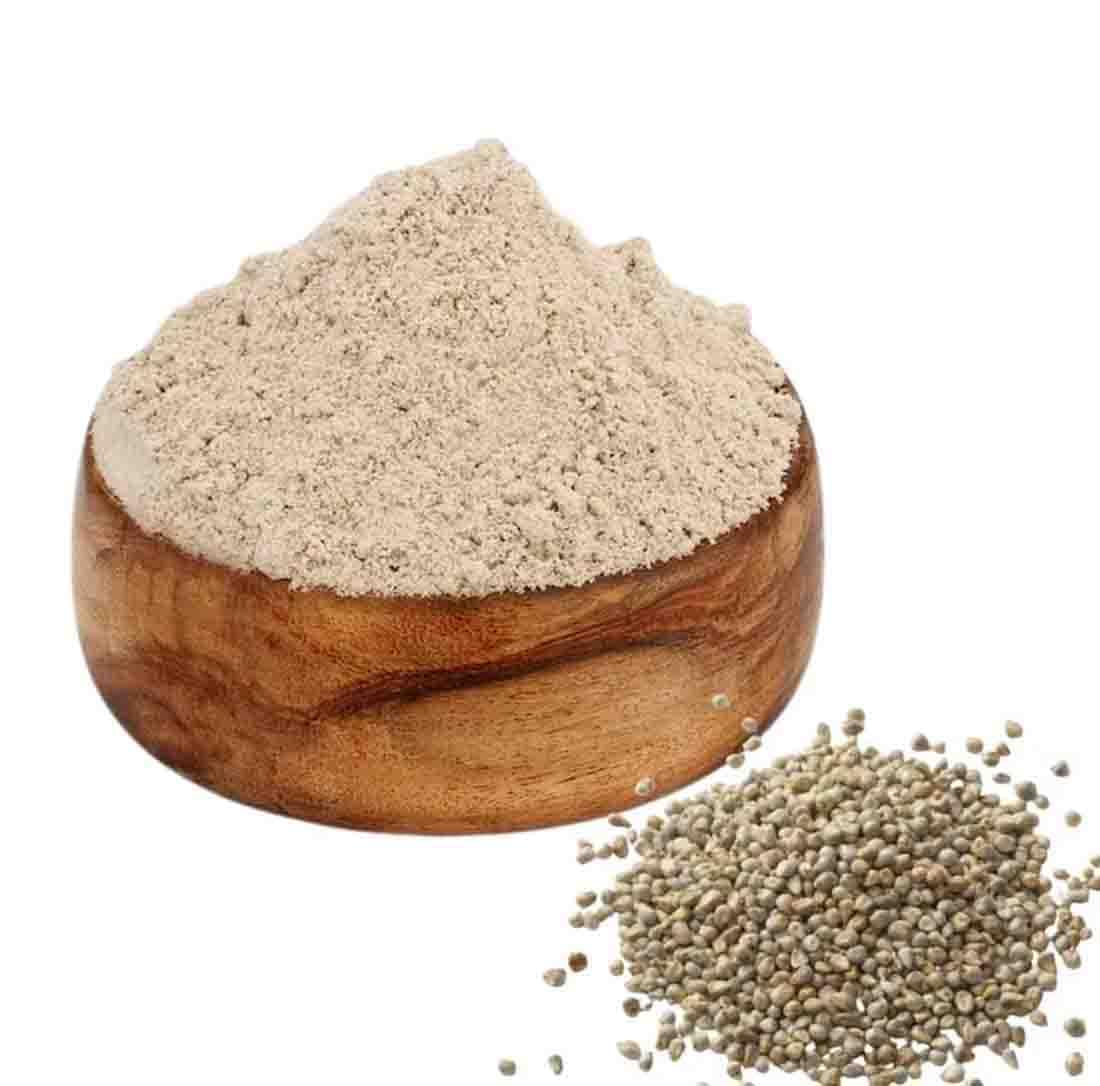Bajra Flour
Description
Bajra flour, also known as pearl millet flour, is a staple food in many parts of India and Africa. Here are some key points about it:
Nutritional Benefits
- High Fiber Content: Bajra flour is rich in dietary fiber, which aids in digestion and helps prevent constipation.
- Protein-Rich: It contains a significant amount of protein, making it a good option for vegetarians.
- Minerals: It is high in essential minerals like iron, magnesium, phosphorus, and potassium.
- Vitamins: Bajra flour provides several B-complex vitamins.
- Low Glycemic Index: It has a low glycemic index, making it suitable for diabetics as it helps in maintaining blood sugar levels.
Health Benefits
- Digestive Health: The high fiber content aids in maintaining healthy digestion.
- Heart Health: The magnesium in bajra helps in maintaining a healthy heart by regulating blood pressure.
- Weight Management: The fiber content also contributes to a feeling of fullness, which can aid in weight management.
- Bone Health: The phosphorus and calcium content supports strong bones and teeth.
- Antioxidant Properties: Bajra contains antioxidants that help in reducing oxidative stress and inflammation.
Culinary Uses
- Rotis and Flatbreads: Bajra flour is commonly used to make rotis, bhakris, and other types of flatbreads.
- Porridge: It can be used to make a nutritious porridge.
- Baking: Bajra flour can be used in baking recipes like muffins, cookies, and cakes, often in combination with other flours.
- Fermented Foods: It is used in making fermented foods like dosas and idlis in some regions.

